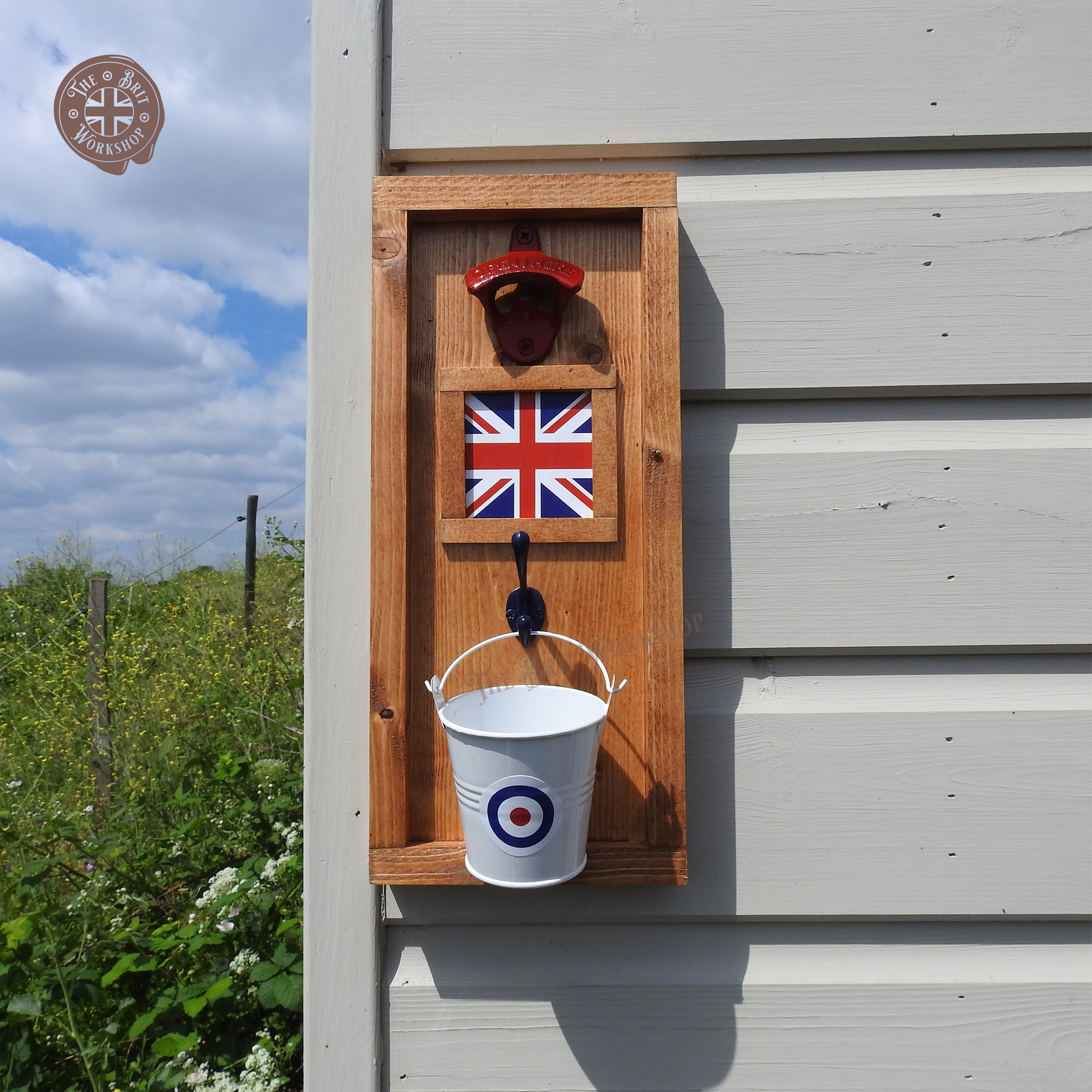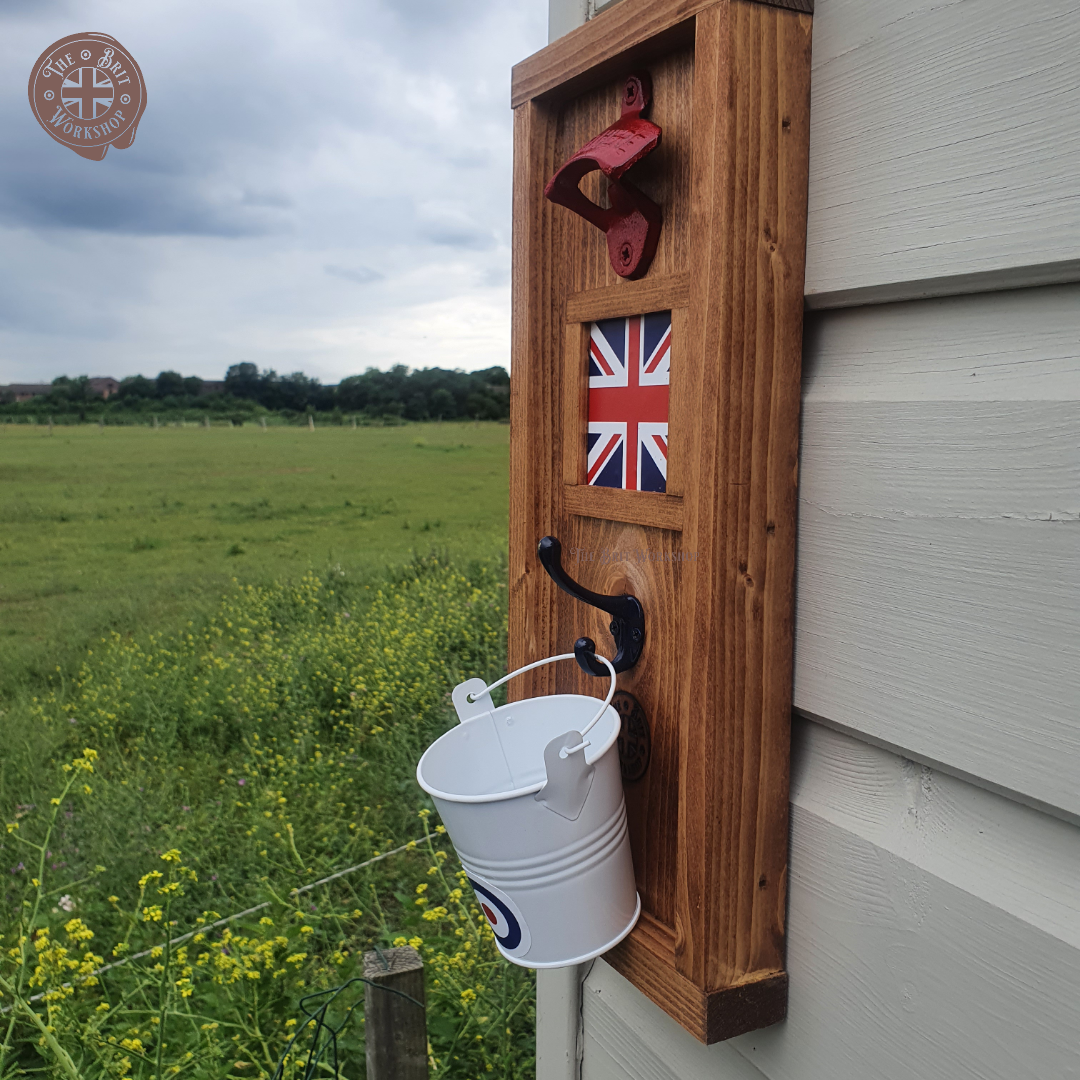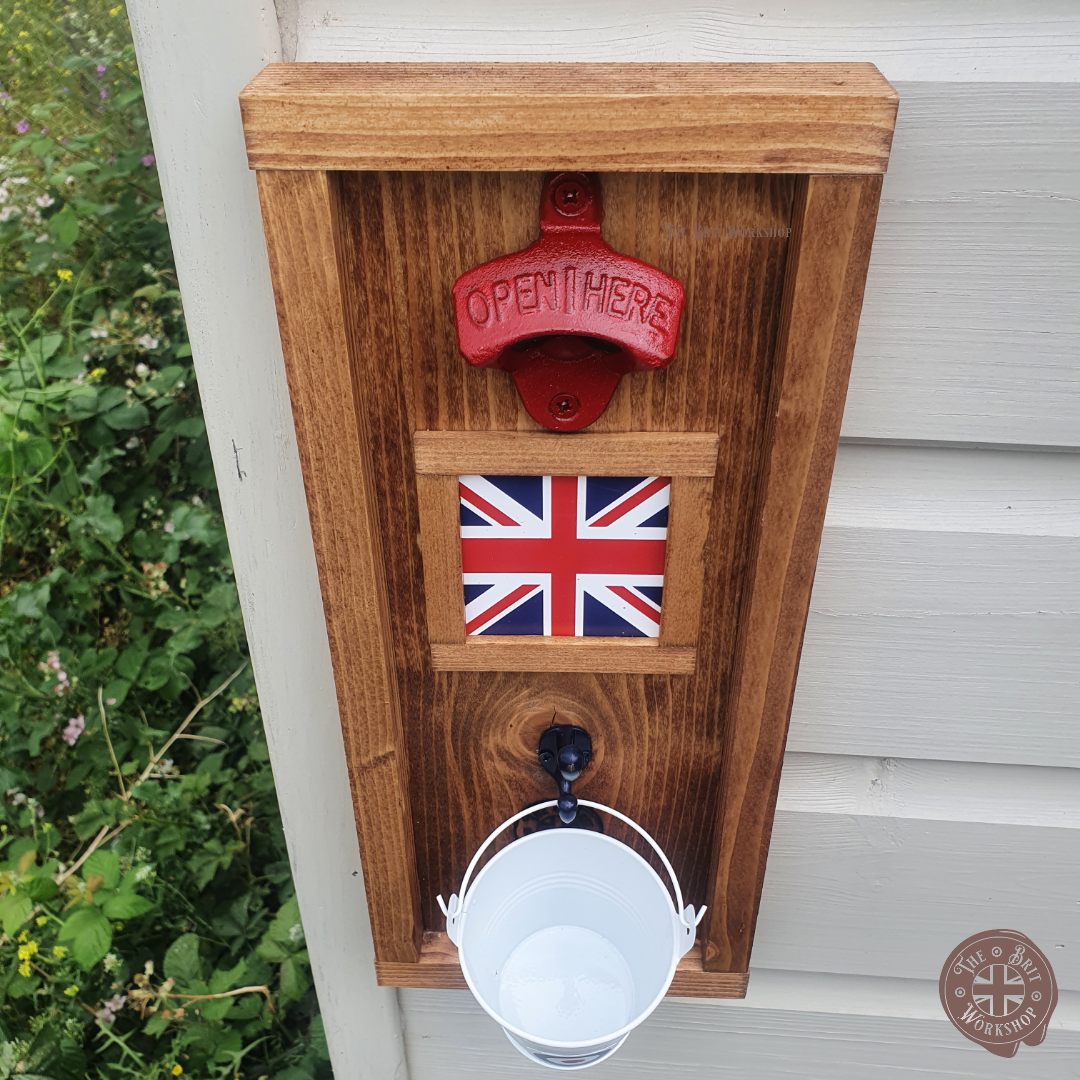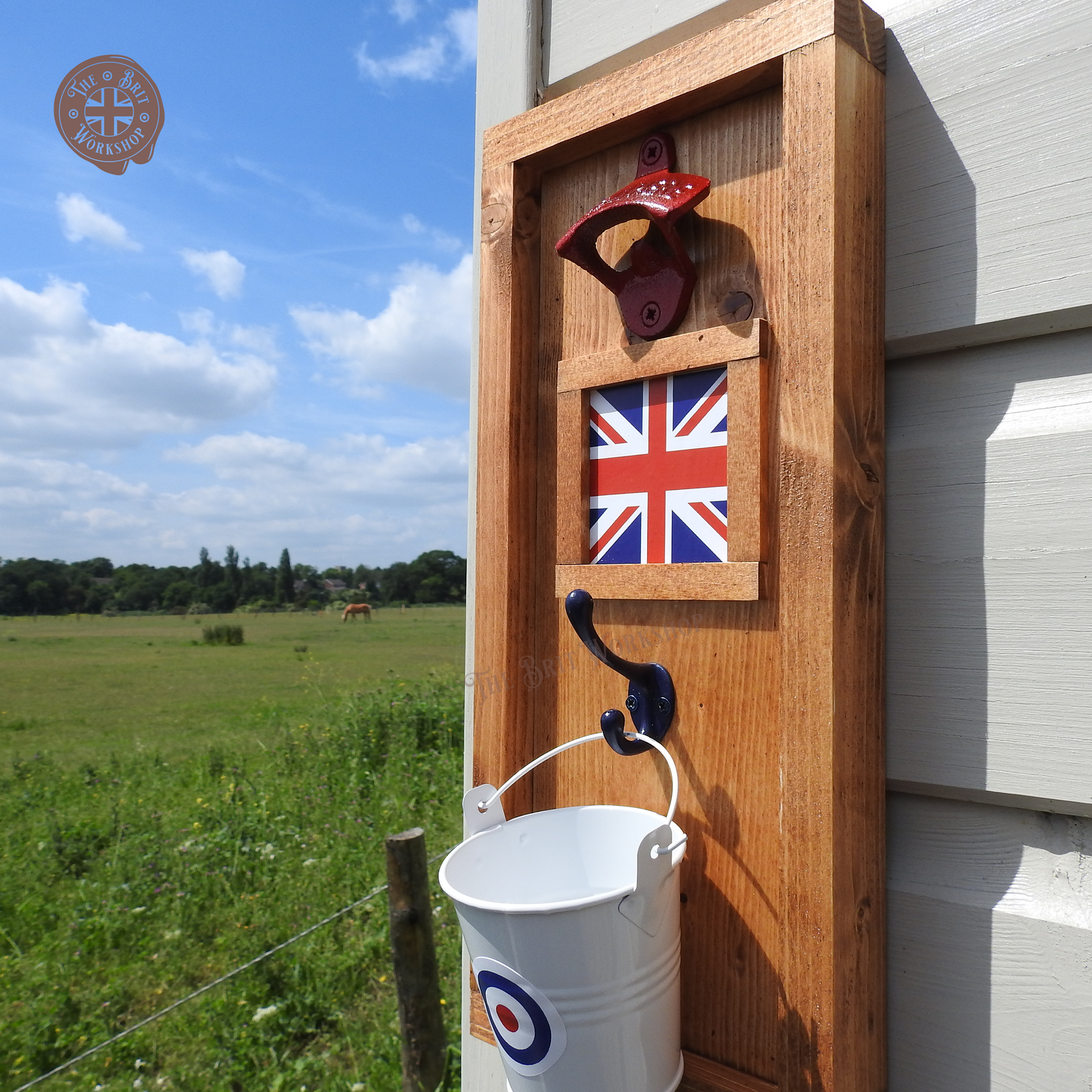The Brit Workshop
Union Jack rustic wall mounted bottle opener
Union Jack rustic wall mounted bottle opener
Couldn't load pickup availability
Description
These rustic wall mounted bottle openers are designed to suit both an indoor and outdoor setting. The opener itself is made from cast iron, the hook is steel and the bucket cap bin is tin.
The cast iron bottle opener is sprayed cherry red, the hook is navy blue and the bucket is white with an RAF Roundel.
The pine is finished with Mahogany Danish oil, and has two keyhole hangers on the back for easy hidden screw mounting.
Comes with a novelty Union Jack flag.
Entertain your Barbeque guests in style with this unique wall mounted bottle opener!
Dimensions
35cm x 16cm x 9cm
Delivery
Please allow up to 10 working days from day of purchase for delivery.
History
When the First World War started in 1914 it was the habit of ground troops to fire on all aircraft, friend or foe, so that the need for some form of identification mark became evident.
At first the Union Flag was painted under the wings and on the sides of the fuselage. It soon became obvious that at a distance the St George's Cross of the Union Flag was likely to be confused with the Iron Cross that was already being used to identify German aircraft.
After the use of a Union Flag inside a shield was tried it was decided to follow the lead of the French who used a tricolour cockade (a roundel of red and white with a blue centre). The British reversed the colours and it became the standard marking on Royal Flying Corps aircraft from 11 December 1914, although it was well into 1915 before the new marking was used with complete consistency
Share







